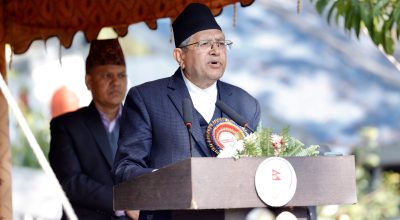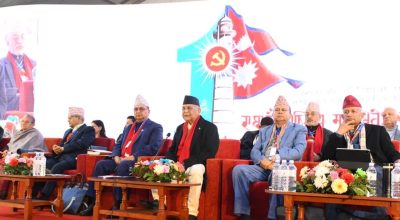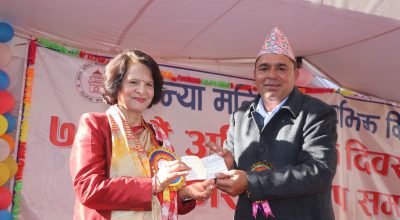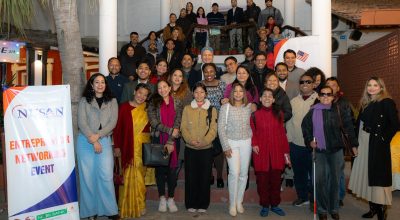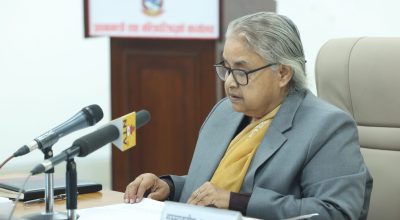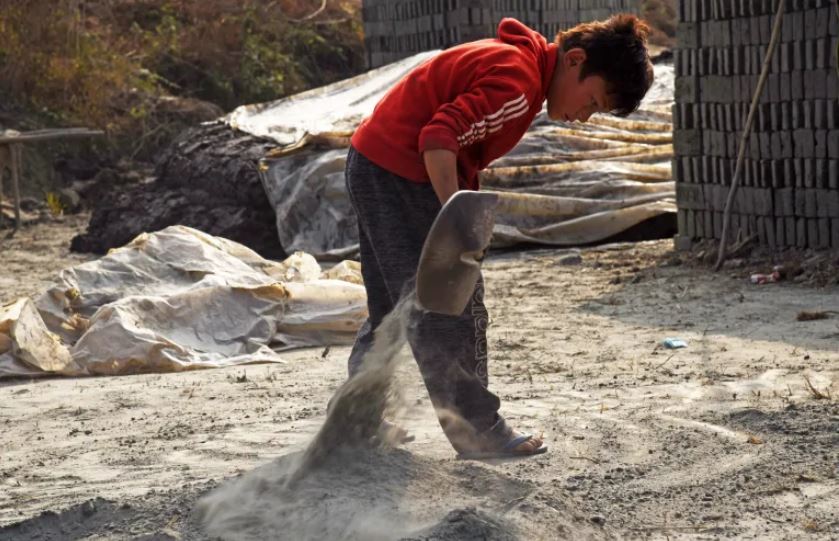
Kathmandu, July 7: Suraj Dhami was calling passengers to board a microbus plying between Ratnapark and Kalimati in the Kathmandu Valley. Dhami, who just turned 11, works as a driver’s helper for the microbus. He fled his home in Sindhupalchok district to work in Kathmandu, the federal capital of Nepal, a dream city for most people.
Weak financial status of his family is a primary cause behind his leaving home being deprived of education. “Ba (father) remarried when I was a child, and went towards India with the stepmother. We had barely sustained livelihood as my mother could not work. I fled my home to work in Kathmandu after my mother could not afford to support for the family, let alone sending me to school,” he shared. He earns only Rs 1,000 a month as a driver’s helper.
Ramji Tamang, 12, works as a dishwasher for a hotel in Balaju for the past two years. He receives nothing in remuneration except food and accommodation provided by the hotel owner. Dhami and Tamang are just a very few representative minors who have been the victims of child labour.
According to available data, 1.1 million children below 14 years of age have been engaged in labour illegally. Of them, 200,000 people have working risky jobs. The number of children makes up around 15 percent of the total population of the country.
According to the Act Relating to Children, 2075 BS, children below 14 years of age shall not be deployed in any risky work or used as a house-servant or house-maid.
Child labour is work that deprives children of their childhood, their potential and their dignity, and that is harmful to physical and mental development, according to the International Labour Organisation.
According to available data, many children are found to be employed in public transport, hotels, restaurants, garages, workshops, quarries, construction, agriculture and car washing. The prevalence of child labour is higher in Karnali and Sudurpaschim Provinces. In Madhes, Karnali and Sudurpaschim Provinces, hundreds of children are found to have gone to India in search of job opportunities.
According to Article 51 of the constitution of Nepal under policies relating to labour and employment (i) (3), all forms of labour exploitation including child labour shall be abolished.
Article 39 (4) states that no child shall be employed to work in any factory, mine or engaged in similar other hazardous work. There are other acts that have criminalised child labour and their trafficking. These acts are the Child Labour (Prohibition and Regulation) Act, 2056 BS, the Child Labour (Prohibition and Regulation) Rules, 2062 BS, the Free and Compulsory Education Act, 2075 BS, the Act Relating to Children, 2075 BS, the National Penal (Code) Act, 2074 BS, the Labour Act, 2074 BS, and the Human Trafficking and Transport (Control) Act, 2064 BS. However, these acts and rules have not been properly implemented leading to the insecurity and child labour, warned concerned authorities.
To end child labour, awareness campaign should be launched along with the effective implementation of the constitution, all laws, acts and regulations, said Yamlal Bhusal, spokesperson for the Ministry of Women, Children and Senior Citizens.
Poverty, illiteracy, unemployment, unhealthy family life, economic deprivation, migration, lack of decent work opportunities for adults and adolescents and emergencies are among the factors that drive to child labour, according to the International Labour Organisation. These factors are however not only the cause but also a consequence of social inequalities reinforced by discrimination, it has been said.
Child workers are found to being exploited by depriving them of remuneration or low paying, and of basic amenities and security, engaging them in commercial sexual activities and forced begging, and meting out physical and mental tortures, according to Aasaman Nepal, an organisation dedicated to children’s education, health and other rights operating in Sudurpaschim, Gandaki, Bagmati and Madhes Provinces that has been providing efficacy enhancing training on child participation and child friendly counseling to the employees of organisations working in the field of child labour.
Lax implementation of laws relating to child labour at all three governments, local, provincial and federal has been a matter of concern, said the Aasaman Nepal’s advisor Guru Subedi emphasising the launch of awareness programmes from the local level.
According to a study carried out by the Aasaman Nepal, most of child workers surveyed expressed their desire to get enrolled in school while urging the government and concerned authorities to manage for them to get education. They were equally concerned about their families as they urged the concerned authorities to help their families generate incomes by providing job opportunities.
Vice Chairperson of the National Child Right Council Bam Bahadur Baniya said the Council had been monitoring about child labour, and looking into and resolving related cases. Besides, other efforts are underway to end child labour, he added.
In the past five years, the number of child workers has dropped from 1.6 million to 1.1 million, said the Council. According to the Nepal Child Labour Report, 2021.
Out of around seven million children between the age of 5 and 17 years in the country, 1.1 million were found engaging in child labour, which is about 15.3 percent. Among the total children, 3.2 percent (about 0.2 million) are found to have been engaged in hazardous work.
Child labour is highest in Karnali Province (24.6 percent) followed by Sudurpaschim (20.9 percent), Koshi Province (17.6 percent), Gandaki (16.1 percent), Lumbini (15.8 percent), Madhes (11.5 percent), and Bagmati (8.9 percent). Child labour prevalence is higher in the rural region (20.4 percent) as compared to the urban region (12.1 percent).
Highest child labour prevalence is found among Dalits (19.4 percent), followed by indigenous nationalities (18.1 percent), Brahmin/Chhetri (14.5 percent), Tarai caste (12.7 percent), Muslim and other caste categories (12.8 percent), and Newar (9.9 percent).
About 87 percent of child labour are from the agriculture sector while 13 percent from the non-agriculture sector. The prevalence of female labour is higher as opposed to male child labour in the agriculture sector. RSS







